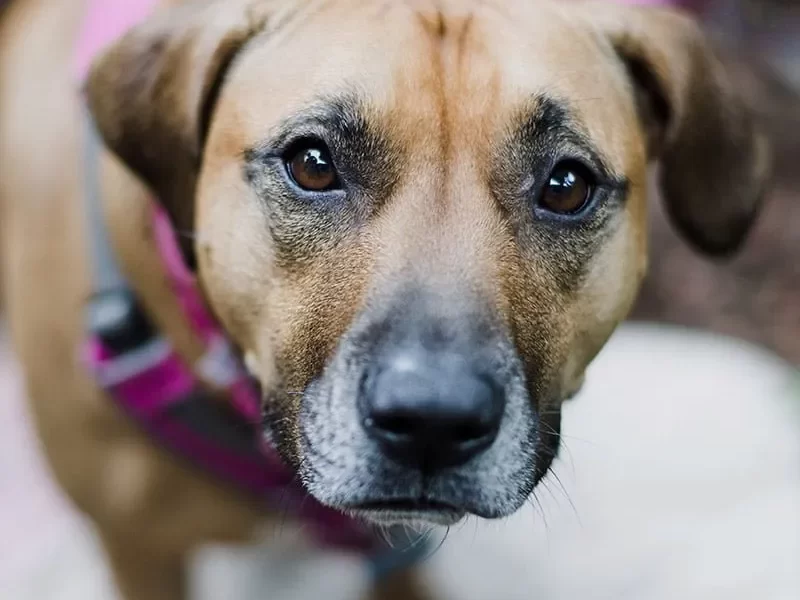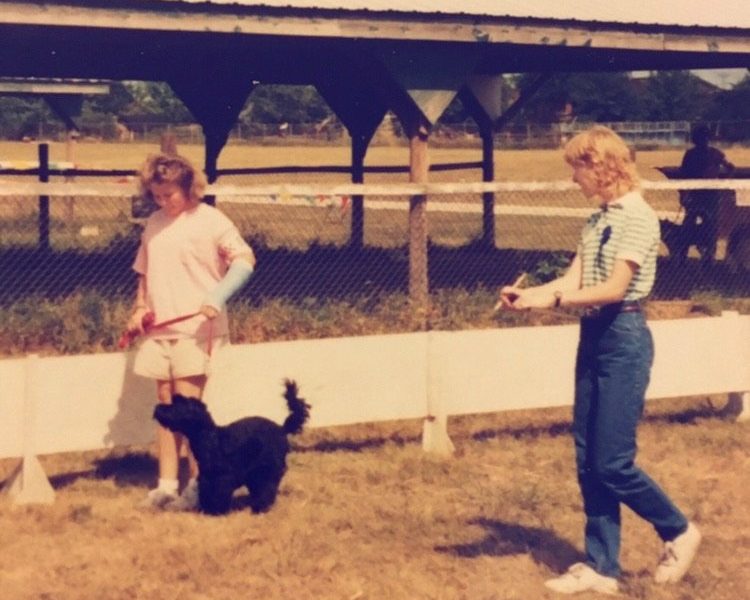Free shaping is a dog training method that empowers you to teach your furry friend new tricks without force or coercion. It’s a positive reinforcement approach that focuses on rewarding small steps towards a desired behavior. Essentially, you guide your dog to discover the behavior you want by marking and rewarding approximations of it.
Contents
Understanding Free Shaping
Free shaping is different from traditional training methods. Instead of telling your dog what to do, you let them figure it out. This might sound challenging, but it’s actually quite rewarding for both you and your dog.
Imagine you want to teach your dog to “shake.” You wouldn’t grab their paw and force it up and down. Instead, you would wait patiently until they lift a paw, even slightly, and then mark that behavior with a clicker or a verbal marker like “yes!” followed by a treat. Over time, you gradually increase your criteria for what you consider a “shake,” rewarding closer and closer approximations.
Benefits of Free Shaping
- Stronger bond: Because free shaping is based on positive reinforcement, it helps build trust and a stronger bond between you and your dog.
- Creativity: Your dog becomes a problem-solver, using their own creativity to figure out what you want. This mental stimulation can be incredibly rewarding for them.
- Precision: Free shaping allows for precise training, as you can shape even the smallest details of a behavior.
- Versatility: You can use free shaping to teach a wide range of behaviors, from simple tricks to complex commands.

Getting Started with Free Shaping
To begin your free shaping journey, you’ll need a few essentials:
- High-value treats: These are treats your dog loves and will work hard for.
- A clicker or verbal marker: A clicker is often used, but a consistent verbal marker like “yes!” works just as well.
- Patience and consistency: Free shaping takes time and patience. Consistency in your marking and rewarding is crucial.
Start with a simple behavior, like offering a paw. Wait for your dog to lift a paw, even slightly, and then mark and reward. Gradually increase your criteria, rewarding only closer approximations of a full paw shake.
Common Mistakes to Avoid
While free shaping is a powerful tool, there are a few common mistakes to avoid:
- Talking too much: Avoid giving verbal cues or commands. You want your dog to figure it out on their own.
- Rewarding too early: If you reward before your dog offers the desired behavior, you’re accidentally rewarding unwanted behaviors.
- Getting frustrated: Free shaping can be challenging at times. Take breaks if you’re feeling frustrated.
Free Shaping Examples
To illustrate the process, let’s look at a few examples:
- Teaching “sit”: Wait for your dog to lower their bottom slightly, even if it’s just for a second. Mark and reward. Gradually increase the duration of the sit.
- Teaching “leave it”: Present a treat in your closed hand. When your dog doesn’t try to grab it, mark and reward. Gradually increase the temptation by moving your hand closer to their nose.
- Teaching “high five”: Wait for your dog to lift a paw, even slightly. Mark and reward. Gradually increase the height of the paw.

Free Shaping and Behavior Modification
Free shaping isn’t just for teaching tricks. It can also be a valuable tool for behavior modification. For example, if your dog jumps on people, you can shape the behavior of staying all four paws on the ground when greeting.
Examples of Free Shaping in Action
Free shaping is a versatile training method that can be applied to a wide range of behaviors. Let’s explore some practical examples.
Basic Behaviors
-
Teaching “Sit”:
- Start by clicking and treating any slight lowering of the dog’s body.
- Gradually increase your criteria, rewarding lower and lower positions until the dog is sitting fully.
-
Teaching “Shake”:
- Click and treat any movement of the dog’s paw.
- Gradually shape the paw lift higher, eventually leading to a full shake.
-
Teaching “Leave It”:
- Place a treat in your closed hand.
- Click and treat when the dog doesn’t try to grab it.
- Gradually increase the temptation by moving your hand closer.
Complex Behaviors
-
Teaching “Fetch”:
- Throw a toy and click and treat when the dog shows any interest in it.
- Gradually shape the behavior into bringing the toy back.
- Eventually, shape the dog to drop the toy at your feet.
-
Teaching “High Five”:
- Click and treat any lift of the dog’s paw.
- Gradually shape the paw lift higher, aiming for a target height.
-
Teaching “Roll Over”:
- Click and treat any movement towards rolling over.
- Gradually shape the roll into a complete rotation.
Behavior Modification
-
Overcoming Fear:
- For a dog fearful of certain objects, start by clicking and treating when the dog is calm in the presence of the object.
- Gradually increase the proximity to the object, rewarding calmness throughout.
-
Reducing Jumping:
- Click and treat when the dog keeps all four paws on the ground when greeting.
- Gradually increase the excitement level of the greeting while maintaining the four-on-the-ground position.
Creative Shaping
-
Teaching a “Bow”:
- Click and treat any lowering of the dog’s front end.
- Gradually shape the behavior into a full bow.
Common Challenges in Free Shaping
Free shaping, while incredibly rewarding, can present some hurdles. Understanding these challenges and how to overcome them is essential for a successful training journey.
Over-Rewarding
One common pitfall is over-rewarding. It’s easy to get excited when your dog shows even a hint of the desired behavior. However, rewarding too early can inadvertently reinforce unwanted behaviors. The key is to be patient and wait for a closer approximation before clicking and treating.
Raising Criteria Too Quickly
Jumping ahead too fast can frustrate both you and your dog. Remember, small steps lead to big results. Increase your criteria gradually, giving your dog time to understand what you’re asking. If they seem confused, take a step back and revisit previous criteria.
Dog Gets Stuck in a Loop
Sometimes, dogs can get stuck repeating the same behavior over and over, even if it’s not quite right. This can be frustrating, but it’s important to stay calm. Withhold your click and treat until they offer something different. You can also try ignoring them for a short period before resuming the session.
Owner Becomes Frustrated
Free shaping requires patience, and it’s normal to feel frustrated at times. It’s essential to take breaks when needed. Remember, training should be fun for both you and your dog. If you’re feeling stressed, it’s likely your dog is too.
Distractions
Training in a quiet environment can be helpful, but real life is full of distractions. Once your dog has mastered a behavior in a calm setting, start introducing distractions gradually. This will help your dog generalize the behavior to different environments.
Plateauing
There may be times when it feels like your dog has stopped progressing. This is often a temporary plateau. To break through, try changing the training environment, varying the reward, or taking a short break.
Lack of Clarity in Criteria
It’s crucial to have a clear picture of the desired behavior in your mind. If you’re unsure what you’re looking for, your dog will be confused. Take some time to visualize the final behavior and break it down into smaller, achievable steps.

Free shaping is a rewarding and effective way to build a strong bond with your dog while teaching them new skills. It’s a journey that requires patience and consistency, but the results are well worth the effort. By understanding the principles of free shaping and practicing regularly, you can unlock your dog’s full potential.
Remember, every dog is unique. What works for one dog might not work for another. Be patient, have fun, and enjoy the process of discovering your dog’s hidden talents.


